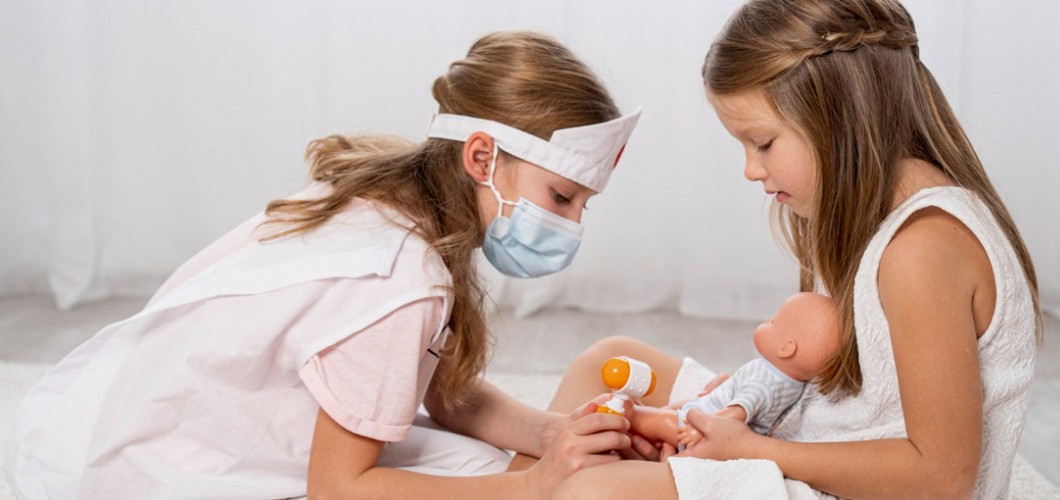
Common Accidents in Children and First Aid Methods
Children are naturally curious and energetic, eager to explore and learn. However, this exploration process comes with risks in the form of accidents and injuries. Their natural curiosity and activity levels, especially while playing at home or outdoors, often lead to dangerous situations. Parents and caregivers must be knowledgeable about how to prevent accidents and how to provide first aid in case of emergencies.
In this article, we will discuss common accidents in children and provide first aid methods for each situation. Knowing first aid is essential for increasing a child's safety and ensuring that you can react appropriately during emergencies.
1. Falls and Injuries in Children
Children, as soon as they begin to move, are at risk of falling or getting injured. Common situations include falls from stairs, tripping while running, or slipping while playing. These falls can result in injuries to the head, back, arms, or legs.
First Aid Methods:
- Head Injuries: If the child hits their head, calmly check the child for signs of dizziness, nausea, or fainting. If any of these symptoms are present, call for emergency medical help immediately.
- Broken Arms or Legs: If you suspect a fracture, avoid moving the child and support the limb in a comfortable position. Call for medical assistance as soon as possible.
- Bleeding: For any cuts or injuries, apply gentle pressure with a clean cloth to stop the bleeding. If bleeding doesn’t stop, seek emergency help.
2. Burns and Heat-Related Injuries
Children can suffer burns from hot surfaces, boiling liquids, or electrical appliances. Burns, especially in infants and toddlers, are common due to the increased risk of exposure to hot surfaces or liquids.
First Aid Methods:
- Burns from Hot Surfaces: Run cool water over the burn area for at least 10-20 minutes. Avoid placing ice directly on the skin, as this can cause further damage.
- Burns from Hot Liquids: If the child is burned by hot liquid, immediately rinse the area with cool water. If the burn is severe, seek emergency medical help right away.
- Burn Cream or Gel: For mild burns, use burn creams or gels that are appropriate for children, but avoid using any harmful substances that could further damage the skin.
3. Choking
Choking is a common emergency in young children, especially when they put small objects or food in their mouths. If not addressed quickly, choking can lead to suffocation.
First Aid Methods:
- In Case of Choking: If the child is choking, immediately turn them face down and administer five back blows between their shoulder blades. If choking continues, perform the Heimlich maneuver (abdominal thrusts) and call for medical help.
- If the Child Loses Consciousness: If the child becomes unconscious, perform CPR (cardiopulmonary resuscitation) and call for emergency assistance.
4. Electric Shock
Children can suffer electric shocks by touching electrical devices or exposed wires. Electric shocks can result in serious injuries, including heart failure.
First Aid Methods:
- During Electric Shock: If the child experiences an electric shock, first ensure that they are no longer in contact with the electrical source. Never touch the child directly if they are still in contact with the power source. If safe, turn off the electricity or use an object to separate the child from the electrical source.
- If the Child Becomes Unconscious: If the child loses consciousness or shows signs of severe injury, start CPR immediately and seek professional medical help.
5. Allergic Reactions
Children may experience allergic reactions, especially when consuming new foods or being exposed to pollen, animal dander, or insect stings. Allergic reactions can escalate quickly, causing symptoms like swelling, rashes, and difficulty breathing.
First Aid Methods:
- Swelling and Rash: If the child develops swelling, hives, or rashes, apply a cold compress to the affected area. Administer antihistamines as directed by a doctor.
- Severe Reactions (Anaphylaxis): If the allergic reaction worsens, particularly if the child is having trouble breathing, seek immediate emergency help. An epinephrine injection (adrenaline) may be required in severe cases.
6. Poisoning and Ingestion of Harmful Substances
Children may accidentally ingest harmful substances such as cleaning products, chemicals, or medications. Poisoning can lead to serious complications, so immediate action is needed.
First Aid Methods:
- In Case of Poisoning: If the child ingests a poisonous substance, immediately call the Poison Control Center or emergency services for guidance. Do not try to make the child vomit unless instructed by a professional.
- Chemical Exposure: If the child comes into contact with chemicals, rinse the affected area with plenty of water and remove any contaminated clothing. Seek medical help immediately.
Conclusion
Children are naturally inquisitive and active, and while this is essential for their development, it also increases the risk of accidents. Parents and caregivers need to be prepared and knowledgeable about how to react in emergency situations. Knowing how to administer first aid in case of falls, burns, choking, electric shock, allergic reactions, and poisoning can prevent further harm and even save a child's life. In all cases, stay calm, act promptly, and always seek professional medical assistance when needed.

Leave a Comment